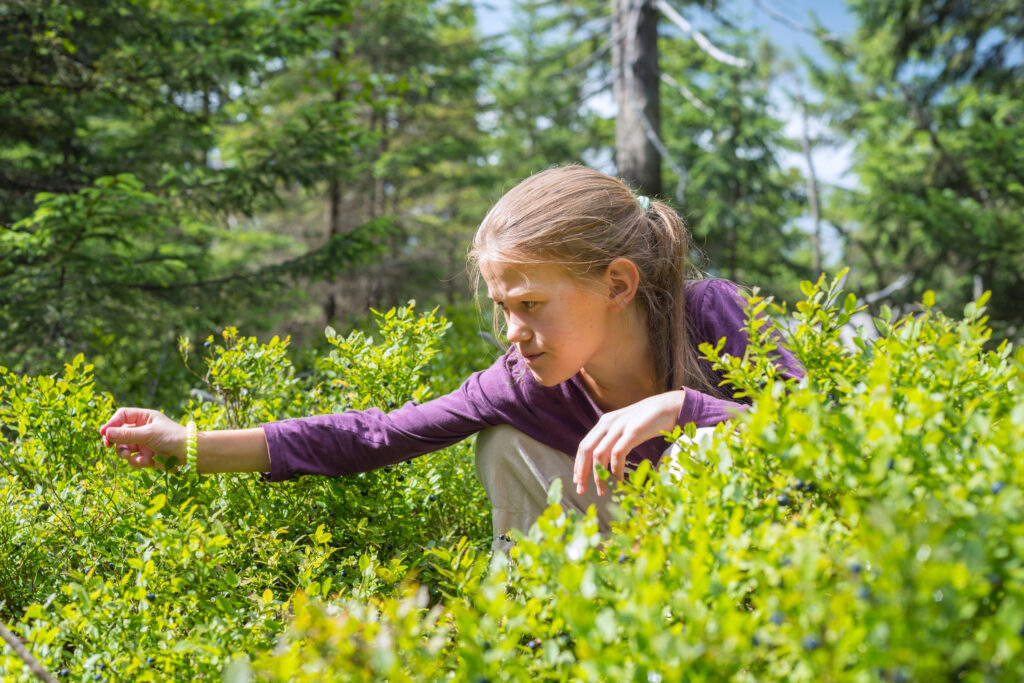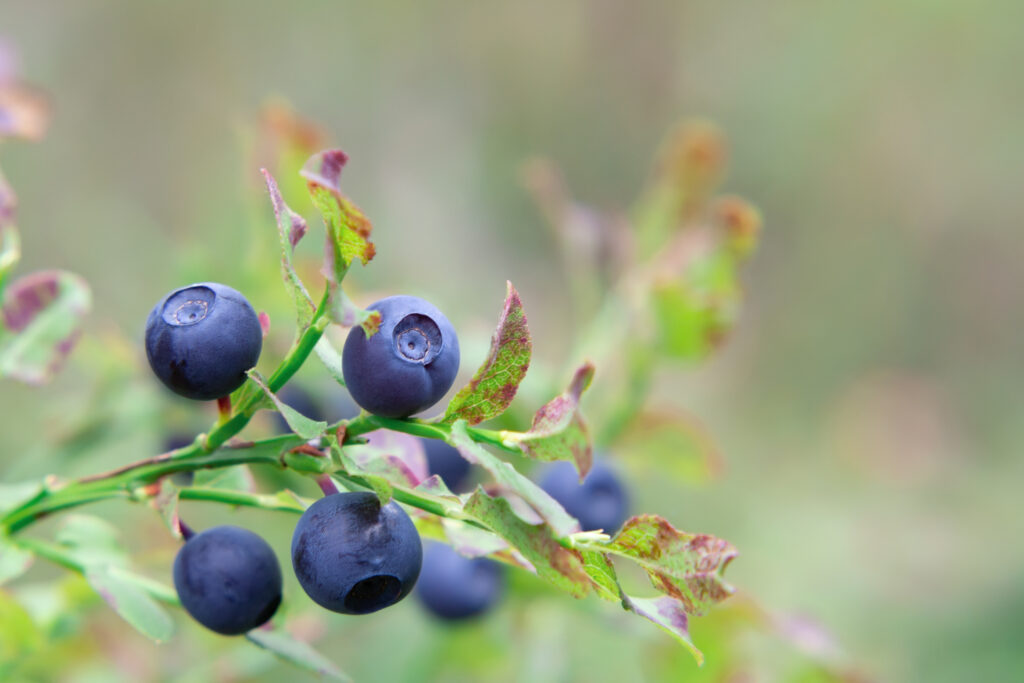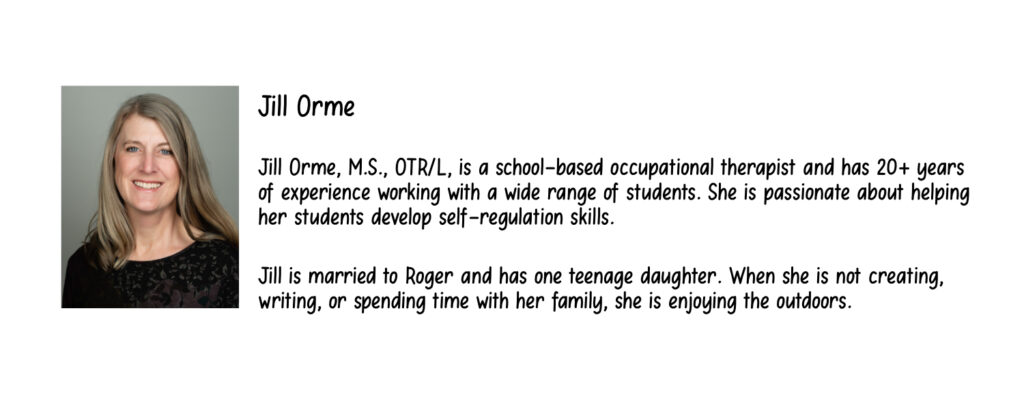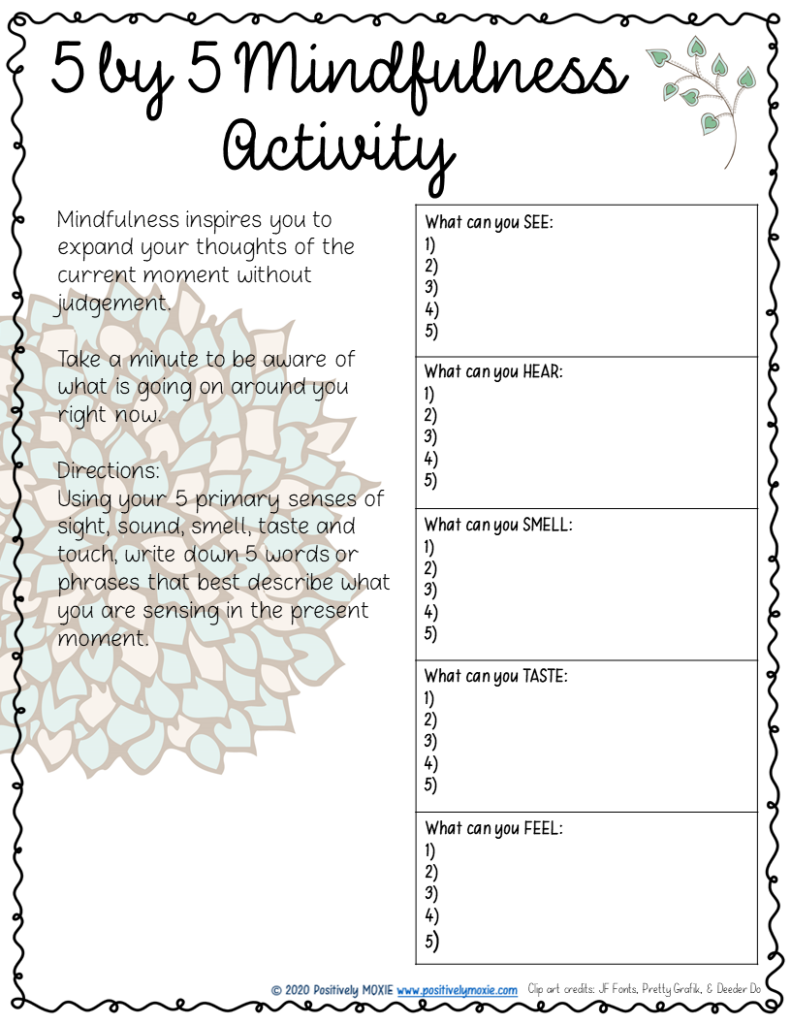Using Nature for Mindful Awareness

Mindfulness practice with kids improves their mood and decreases stress. Learn how to use nature to boost mindful awareness. Why mindfulness in nature? Research has shown that mindfulness improves mood and health while decreasing stress. Getting our kids outside in nature on an early summer day is a good start.
In early August, I went huckleberry picking. I ventured off with my good friend and our daughters (both twelve) on a bright and cool morning in the North Central Idaho mountains. Those who have been huckleberry picking know it is a slow process. Even a “good” bush has maybe 10 berries on it. You can do the math.
Mindfulness using huckleberries!
There are a few things that slow a person down. Huckleberry picking is one of them. Huckleberries, found in the wild and native to the mountains of Idaho and Montana, provide a wonderful addition to muffins, pancakes, and ice cream. They are cherished by those who gather them. When picking huckleberries, it necessitates slow but steady progress, one step at a time, one berry at a time.

As we picked our berries, the girls giggled with delight as they added to their stashes, talking and enjoying each other’s company while needing to redirect their attention and focus back on berry picking.
Mindfulness is cultivated by purposefully paying attention to things we ordinarily never give a moment’s thought to. Alas, the huckleberry! Creating a mindfulness practice is NOT done by simply following a formula or recipe. Amy Saltzman, in her book, A Still Quiet Place (2014) uses a simple acronym of ABC to help kids develop the basics of mindfulness.
A is for attention. Stopping what we are doing to pay attention to our breath, or B.
B is for breath. Taking a deep, slow breath helps us to refocus and allows for better decision-making, or C.
C is for choose. Allowing us to pay attention to our breath, we can make a kinder choice – a choice that is kind to us and kind to others.
Cultivating mindfulness in nature with kids may be easier than you think. Below are 5 ways to embed mindfulness practices in nature with kids.
1) Use 5 senses in nature to boost mindfulness.
Amy Saltzman explains to young people that “mindfulness is paying attention here and now, with kindness and curiosity, and then choosing your behavior.” Saltzman uses the phrase “kind attention” for kids to describe a key term for adults – non-judgment.
Curiosity is the second part of Saltzman’s definition. This is a fun concept that reminds us to look at events and ordinary experiences for the first time or with a “beginner’s mind.” We can increase mindfulness practice with kids by providing opportunities for curiosity.
Huckleberry picking allowed us to soothe our minds, and we found ourselves self-reflecting. It is a remarkably calming activity. It reminds us of how “mindful” it is to be out in nature—furthermore, using our senses to be in the present moment by looking at the huckleberry plants and scenery, smelling the fragrant alpine air, feeling the light cool breeze and early morning sun on my skin, and stepping on the scrunchy uneven terrain. In addition, we think and reflect, but all the while, we need to redirect our attention and focus back to those elusive huckleberries. How can we help kids experience some of the natural sensations going on when we are outside? Please encourage them to tap into their five main senses.
What do you:
See now?
Hear around you now?
Smell?
Taste?
Feel?
2) Cultivate gratitude for nature.
The faster and busier things get, the more we need to build in thinking time into our schedule. And the noisier things get, the more we need to build quiet reflection spaces in which we can truly focus.
Greg McKeown from Essentialism (2014)
I love this concept. We live in a very noisy and busy world. How can we help our children focus? How can we get them to reflect quietly? Well, I can say from experience that scanning for huckleberries and simultaneously staring at your smartphone is nearly impossible. Cultivating a gratitude practice in nature helps to boost mindfulness practice with kids.
Getting children out in nature can improve health and well-being. In his book, Last Child in the Woods (2005), Richard Louv reports on “nature-deficit disorder” affecting our children’s emotional and physical health. He spurred a national movement around the need to get our youth outdoors. Louv reports that nature has many benefits for children, including better academic performance, improved attention, increased engagement, and improved behavior due to greater impulse control and less disruptive behavior.
3) Understand the power of our breath.
Mindful breathing is yet another way to increase mindfulness practice with kids. When stressed, extending our exhalation during a deep breath is one of the quickest ways to activate our body’s natural relaxation response. Slow deep breathing stimulates our parasympathetic nervous system. During stressful times and to keep our body handling life’s normal ups and downs, our autonomic nervous system manages our body and brain through its sympathetic and parasympathetic branches.
To clarify, the sympathetic branch operates the “gas” pedal in our brain, responding quickly. This triggers strong feelings and body reactions such as increased heart and breathing rates and the release of adrenaline and cortisol hormones. On the other hand, the parasympathetic branch is the “brake” pedal, calming our body by slowing our heart and breathing rate. When we exhale slowly, we stimulate the parasympathetic branch. When outside, encourage children to practice lengthening exhalation and ask what it feels like in their bodies.
4) Take a mindful walk.
The journey of a thousand miles begins with one step.
Lao Tzu
Another way to enhance mindfulness practice with kids is by simply walking. Our and children’s days are filled with schedules, from homework to lessons, errands to emails, practices to play dates. Mindful walking is an easy way to help us clear our minds and pay attention to even the simple process of walking.
Walking helps to reset our brains. Fresh air and movement are soothing to our nervous system. Walking has a natural rhythm that is calming. Paying attention to our surroundings brings deliberate awareness to walking and allows us to change our perspective.
There are many ways of approaching mindful walking, from light and informal awareness of our surroundings to walking the family dog to more formal practice. The consistent theme is to be present and mindful rather than on autopilot.
Thich Nhat Hanh suggests children can recite simple lines, saying one line per step:
I have arrived, I am home, in the here, in the now.
5) Notice nature without judgment.
When teaching children mindfulness, we can break it down into two easy-to-digest parts. First, mindfulness is paying close attention to what’s happening around us. The second part of mindfulness is noticing our surroundings without judgment – waiting to form an opinion until we have carefully considered the situation. How do we help young people evaluate their actions and decide whether it is mindful or unmindful?
Encouraging our young people to evaluate decisions helps them make ties with their thinking and behaviors. When discussing this concept, it is important to state that just because a past action or event may have been “unmindful,” it is not bad behavior. It is an opportunity for self-reflection. When we can better decide if actions are mindful or unmindful, we have a greater ability for self-regulation.
Effective use of journal writing
Another option for self-reflection is journal writing. Journal writing is a great strategy to foster emotional regulation skills in children. It helps improve feelings of well-being, increases communication skills, and develops greater interpersonal communication.
The importance of non-judgment
In his book Full Catastrophe Living (2013), Jon Kabat-Zinn states that we constantly determine whether thoughts are good or bad. Rather, sitting and observing in the present moment. Non-judging encourages us to see and accept things as they are in the present moment. This does not mean we have to like everything and not want to make changes in our lives. However, being willing to see a situation for what it is we are more likely to know what steps we need to take to improve things.
Helping our children become more aware of what’s happening now improves their ability to make better decisions rather than be governed by their emotions. Ask them to notice something beautiful, funny, or kind as they are with you out in nature.
Are you looking for more?
Are you looking for more ways to help your child develop happiness habits? This happiness habits journal aims to explore the science of happiness and positive psychology to learn the skills of happiness habits. This handbook is filled with activities to help you learn the skills of creating more moments of happiness. After completing the tasks, use this handbook for future reference. This workbook contains over 30 interactive pages covering mindfulness, routines, resiliency, and more!



